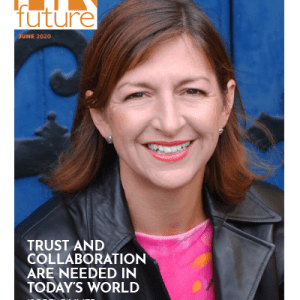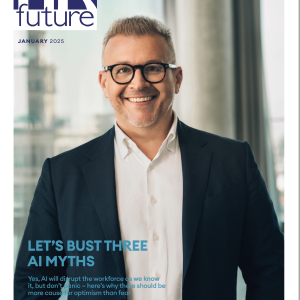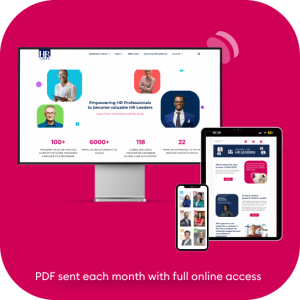According to LinkedIn, the demand for talent acquisition professionals rose by 63% between 2016 and 2020, and this trend is expected to continue. Talent acquisition professionals are not just growing in numbers, they are also evolving.
Several factors explain the transformation of the profession. The availability of new data-hungry digital tools now allows recruiters to reach audiences and targets in a wider yet more precise manner. The Covid-19 pandemic has also put a stop to traditional forms of recruitment, such as networking and pushed adoption of practices better suiting the new generation of millennial managers. This trend is now visible through ubiquitous video-conferencing interviews and employer branding marketing videos.
It can be noted that HR tech will not simply replace recruiters. It will rather automate and reduce repetitive tasks, allowing them to elevate to a more business centric and strategic function. The transformation of the profession however requires new skills. Business leaders and HR departments shall ensure their own Talent Acquisition Teams are equipped with the toolbox to strategize and hire the workforce of tomorrow.
Upskilling employees is hard. Remember that, when it comes to training, Active Learning (classroom, eLearning, reading, etc.) only accounts for 10% of the overall learning! 20% of the journey to retain new skills is rather done through social interactions (mentoring, peer interactions, etc.) and 70% by actually doing things: putting knowledge into practice!
In this short article we will explore SMART ways Talent Acquisition Managers can stretch their skills in the right direction, letting them explore projects that will serve the company’s long-term goal and ability to adapt to change.
Let’s get started!
1. Identify your organization’s top five future skills and articulate an action plan to acquire them
Competency developed: Business partnering.
Objective: Help your company recruit the right skills according to a strategic roadmap.
Explanation: The world has changed for TA professionals. Instead of waiting for recruitment requests to pile in, they must be business-savvy enough to make suggestions and challenge the needs of the business.
Tips for implementation:
- Start with top management and understand what key skills are necessary for the execution of the business ahead of the next five to 10 years. Talent acquisition needs must be linked with the company’s vision and business plan. In case your top management is not educated to assess the future of talents, prepare a bite size learning program for the C-suite;
- Run mini talent insights reviews with your business line managers: help them put words on the future of their professional, cross those pain points with studies on future skills; and
- Get market insights: Your candidates and prospects are an actionable source of information. Ask them the right questions. External providers are also well positioned to sense market shifts, explain candidate expectations or competing strategies in your industry.
2. Launch a virtual info session event for candidates and measure its ROI
Competency developed: Customer engagement.
Objective: Reach your passive candidates and treat your candidates as customers.
Explanation: Even if you are not hiring full steam, you can continue to create relevant content for your future prospects and candidates. Most importantly, it is an outstanding way to showcase your company culture and activities from an “insider” perspective. Information sessions shall attract prospects because they will not have to worry about making a first strong impression on you.
Tips for implementation:
- Set yourself a timeline: one quarter should be enough to organize such an event;
- Get your company’s ambassadors involved: avoid the “HR-only” event: Prospects are interested in how you work, what your technologies are and what makes you different;
- Pick employee ambassadors with extra-care (position, academic background, career path, age, gender, ability to convince… what they say needs to be interesting and feel genuine);
- Work with your marketing department to organize, promote and prepare the event; and
- Measure and report the event ROI after implementation: conversion in number of applicants etc.
3. Build outreach with monthly content to showcase the organization to the public
Competency developed: Content writing.
Objective: Boost employer branding and increase spontaneous applications.
Explanation: Candidates are normal human beings. Like the rest of us, they spend hours a day scrolling feeds on their phone so your best chances are to try to reach them online. Are you familiar with guest blogging? Well, the objective is to reproduce such practice on behalf of your company.
Tips for implementation:
- Learn how to write concise articles and basic SEO tips (title, tags and keywords);
- Think like your candidates: what websites do they visit which is relevant to your company’s mission statement, product and services etc.? If you can’t figure it out, social media can also be a great way to publish content targeted at a specific population (see next suggestion);
- Review content with your Corporate Communication or Marketing Department, seek Manager’s approval before publishing to ensure alignment with company’s brand and vision; and
- Measure your ROI: typical KPIs can include number of candidates, spontaneous applications and enquiries. Another way to track is to ask in job applications where the candidate learned about the company first.
4. Experiment with social media advertising, measure and report
Competency developed: Digital Marketing.
Objective: Meet your customer base and test your brand effectiveness.
Explanation: Digital marketing for a HR professional. Yes! Since publishing monthly content is part of your agenda, you can go one extra step with advertising. Not only will you become familiar with modern techniques of advertisement, but it will force you to fully understand your audience’s digital behaviours: which keywords are present in their profiles, which industry should they come from, what are the most frequent position titles used, which skills can be used to identify candidates standing out?
Tips:
- Collaborate with your Marketing Manager to make your campaigns and learn from their leadgen strategies;
- Online advertisement is always about creating several variants and A/B testing. Do not settle for a single ad;
- Use engaging content depending on your objective;
- Craft your call to action and use a relevant landing page; and
- Analyse results: Is your content catchy enough? Aim at a CTR of maximum 1.5 USD.
5. Use design thinking techniques to improve recruitment practices
Competency developed: Design thinking.
Objective: Prototype, launch innovative recruitment tools to continuously improve the HR experience.
Explanation: Design thinking can help you reinvent your candidate’s journey. By putting yourself in the shoes of different candidates’ groups, you will generate a lot of ideas on how to create more meaningful company engagement. Don’t worry, you rarely hit the nail on your first try. To provide the best possible experience to your users, you must go through a process of prototyping, testing, piloting and probably involving other departments. Look at video recruitment. Is it a reality in your company? Why not? You could just use Design thinking to validate whether it would make sense for your internal or external stakeholders.
Tips:
- Get your Talent Acquisition champion trained in design thinking;
- Are tools needed to prototype your ideas? Do not wait for budget and make use of trial periods and test versions available on the market. In some cases, 30 days is long enough to validate if an idea can work;
- Test with several internal clients or line managers and collect their feedback;
- List and clarify what are the expected outputs during the pilot period;
- Evaluate the change management process to implement the new HR recruitment tool (chatbot, skill assessment, video recruitment etc); and
- A lot of ideas generated will probably involve digital components. Do not let your IT department limit your creativity, but make sure to involve them at an early stage to facilitate experimentation and scaling of your ideas.
6. Benchmark analytics against the Industry and present results
Competency developed: People analytics, Data visualization.
Objective: Support top management to make decisions impacting Talent Acquisition (and beyond).
Explanation: Top management is rarely aware of TA metrics: what makes a good Turn Around Time (TAT)? What are the three main reasons candidates reject your company’s offers? Talent Acquisition professional nowadays are working with a wealth of data, it’s time to extract the very best of them and present them to the top management.
Tips:
- Perform a preparation meeting with someone from your top management: understand what are the top 10 metrics which may interest them the most. It’s not always about cost;
- Identify benchmarks for each metric whenever possible: You may look at companies of similar size within the same industry and location. No reliable benchmark data available? You might want to do some (online or offline) networking with like-minded professionals to find out; and
- Do not just flash figures, analyse: Highlight metrics to top management WITH recommendations. This is when business acumen and business partnering skills should be put into practice.
7. Speed up recruitment turnover by empowering Talent Acquisition Manager to close
Competency developed: Negotiation.
Objective: Accelerate recruitments where negotiations can be closed within budget.
Explanation: The TA function is not always in charge of package negotiations. In many companies, “money talks” get escalated to HR Managers or Compensation and Benefits (C&B) specialists. This can lead to frustrations for candidates by introducing new contact points and additional delays. Remember that the longer a recruitment process drags, the more likely you are to lose a good candidate.
In many cases, providing a framework to the TA expert to own the closing phase can lead to increase in recruitment turnover speed, allowing other HR resources for better use. The good news is the TA specialists at the very centre of your recruitment process already have a “sales” skillset. The missing piece may be to train them on negotiation and closing techniques. For that, why not organize a short mentoring program with one of our organization’s top sales or procurement closer?
Tips:
- Not all positions are easy to close: the higher in the hierarchy the position, the more complex the package structure will become. Try to draw a clear line between Talent Acquisition and C&B responsibilities;
- Discuss winning negotiation practices with your company’s top sales or procurement manager: This can be set up in advance as four meetings over the course of two months, for example; and
- Roleplay the offering process with your team: Identify the key pain points of the candidate and prepare answers beforehand. You aim to give peace of mind to the candidate so they can make their decision quickly.
Do you agree with those suggestions? Do they sound challenging enough for your TA team to develop long-term skills? Or do they seem too ambitious to be achieved? Are you a Talent Acquisition Manager willing to develop future-proof skills or a CEO that wants to impulse change in the organization?
Would you like to get more ideas of development plans like this one? Browse different development plans with 70/20/10 activities on Huneety.com. New positions are added every week.
Simon Carvi is an HR expert professional presenting over seven years of experience gained through roles in Talent Acquisition an Employee Retention globally and in APAC. Simon is passionate about how people learn and the future of work. He helps organizations find practical ways to upskill their workforce as the top learning contributor at Huneety.com.























